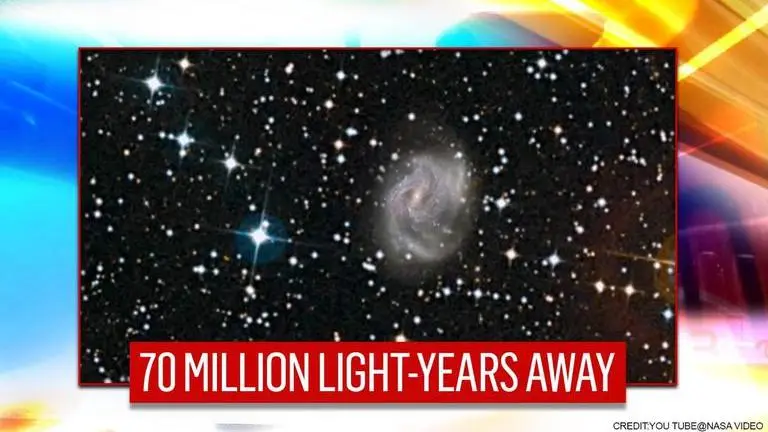Updated 5 October 2020 at 11:43 IST
NASA releases time-lapse video of exploding star 'as bright as 5 billion Suns' | WATCH
Terming galactic phenomenon as “intergalactic paparazzi”, NASA said spectacular event depicts barred spiral galaxy NGC 2525 located 70 million light years away.
- Science News
- 3 min read

NASA has released a stunning time-lapse video of the brilliance of a supernova, an exploding star sending rare shockwaves and unleashing the energy of billion suns before dissipating into oblivion in a spiral galaxy. Terming the rare galactic phenomenon as “intergalactic paparazzi”, NASA said that the spectacular event depicts barred spiral galaxy NGC 2525 located 70 million light-years away. It was observed by NASA's Hubble Space Telescope that's been watching the stars and galaxies cycle for nearly 30 years. The 30-seconds clip compiles sharp images from Hubble’s view from almost a year, between 2018 to 2019.
“At its peak, the exploding star was as bright as 5 billion Suns,” NASA revealed in the description of the video.
Roughly half the diameter of our Milky Way, the spiral galaxy NGC 2525 was located in the southern constellation Puppis and is calculated to be half the diameter of our Milky Way, it added. As the clip begins, the Hubble captures the outer spiral arm that shows fading light of supernova 2018gv as the star explodes at a rate of one per second. The blast sends “shock breakout” releasing energy and vibrance of countless stars as is seen in these supernova images. Hubble detected the supernova dubbed SN 2018gv in the NGC 2525 galaxy in February 2018. Later, amateur astronomer Koichi Itagaki found that NGC 2525 was in fact some 70 million light-years away in the universe. Therefore, Hubble witnessed an event that took millions of years to reach Earth.
Advertisement
“No Earthly fireworks display can compete with this supernova, captured in its fading glory by the Hubble Space Telescope," said Nobel laureate Adam Riess, of the Space Telescope Science Institute (STScI) and Johns Hopkins University in Baltimore.
Expansion rate of the universe
Hubble was unable to record the initial blast of the supernova in January 2018, however, the “discovery of the accelerating expansion of the universe through observations of distant supernovae” was eventually made. This event implies that the astronomers can calculate the distances of their host galaxies, eventually being able to measure the expansion rate of the universe. The star, however, fades into the distant oblivion as astronomers explain that this is because the type of supernova seen in this sequence originated from a burned-out star.
[Located in the globular cluster M4, these small, burned-out stars -- called white dwarfs captured by Hubble's Wide Field and Planetary Camera 2. Credit: NASA Jet Propulsion Laboratory]
Advertisement
Also known as a white dwarf, this type of star is located in a close binary system — that is accreting material from its companion star. “When the white dwarf reaches a critical mass, its core becomes hot enough to ignite nuclear fusion, turning it into a giant atomic bomb. This thermonuclear runaway process tears the dwarf apart. The opulence is short-lived as the fireball fades away,” NASA astronomers explained.
Published By : Zaini Majeed
Published On: 5 October 2020 at 11:44 IST

